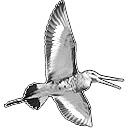Club News
All the latest news for PETERBOROUGH BIRD CLUB
Christmas Quiz with drinks and nibbles
Nov 26, 2025 Web Support
19:30 on 10th December 2025 in St Marks Church Hall (the usual indoor meeting venue)
See you there
PBC's second out-of-area overnight trip of 2026 will run from Sunday to Tuesday 6-8th Sept 26. Please save the date.
Nov 25, 2025 Web Support
Bird Watching Report - A Day at Welney
Nov 22, 2025 Web Support
Dragonflies & damselflies of Lincolnshire
Oct 7, 2025 Web Support
Wiltshire/Hampshire 2026 Announcement
Oct 7, 2025 Web Support
- Sunday 26th am - travel to Amesbury
- Sunday 26th pm – visit RSPB Winterbourne Downs
- Monday 27th – visit New Forest (2 or 3 sites)
- Tuesday 28th am – guided tour by the Great Bustard Group (on Salisbury Plain)
- Tuesday 28th pm - drive home
Remaining Outdoor Meetings Added and a change to Indoor Programme
Sep 26, 2025 Web Support
There may also be a change of date for the Eldernall outdoor meeting on 29/10/25 as it conflicts with the indoor meeting on the same night, so keep an eye on the web site/whatsapp.
Also there is a change on the indoor programme with Dawn Bulmar's talk on Monitoring Our Rare Breeding Birds coming forward to January's meeting and Jeff Blincow's Wildlife In Finnmark moving back to February due to diary issues.
Trip Report – Essex-Suffolk – 20th/21st September 25
Sep 25, 2025 Web Support
2025/26 Indoor and some Outdoor Events Released
Aug 22, 2025 Web Support
Vine House Farm Discount
Jul 2, 2025 Web Support

Use the link, similar to the image above, to Vine House Farm from our Home Page and enter the discount code BC10 to obtain a 10% discount on orders placed online this includes free delivery. Please use to buy your seed etc... as this offer will only exist, if we use it.
Click the link, select your seed etc, enter BC10 and it will turn up on your door step. no more lugging sacks of seed. Win Win.
What are you waiting for?
PBC Lakenheath Fen Trip – 07/06/25
Jun 9, 2025 Web Support
We set of from the reserve office following the path towards New Fen. Blackcap was the first bird heard followed by a great display of flying and singing from a very showy Whitethroat. At New Fen we waited hopefully for a Bittern whilst watching Mallard and Coot ducklings. Reed Warblers, Sedge Warbler and Reed Bunting flew across in front of us. We were fortunate to see a Hobby and a Cuckoo in flight heading in opposite directions. Eventually we achieved our objective and saw three Bittern flights. A first ever Bittern for some of those present.
We then followed the newly cut track alongside the reedbed giving good views across the top of the reedbed. Another Bitter flew across the reedbed towards us and went into the reeds close to us. We then followed a family of Greylags and their gosling up to the end of the track. From there we walked the short distance to the Mere. Bitterns have not bred there this year and no sign of the usual Kingfisher but we had excellent views of a pair of adult Great Crested Grebes catching fish and feeding it to their humbugs (duckling). 2 Hobbies also became very active and flew low over the reeds in front of the trees giving excellent views including catching and eating dragonflies whilst on the wing, After this we moved to Joist Fen and lunch in the rain! Whilst at Joist Fen we had another 4 Bittern flights, good scope views of a very persistent Cuckoo, 2 Great White Egrets and Cranes were heard calling but could not be seen. We left Joist Fen to walk back to the reserve office via the path alongside the River Little Ouse. Heron was the only bird seen until we arrived at the Hockwold Washes. Here there was a mix of ducks and waders including Mallard, Shovelor, Gadwall, Coot, Moorhen, 2 Avocets, several Redshanks and Black-tailed Godwits. Then back to the office for one of the best spots of the day - a freezer full of Ronaldos ice-cream. An excellent finish to a very good day.

